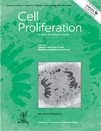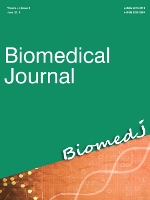
Stem Cell Reviews and Reports
Scope & Guideline
Advancing the Frontiers of Stem Cell Research
Introduction
Aims and Scopes
- Stem Cell Biology and Mechanisms:
The journal explores the fundamental biology of various stem cell types, including their differentiation pathways, signaling mechanisms, and interactions with their microenvironments. - Clinical Applications of Stem Cells:
Research focusing on the therapeutic applications of stem cells in treating various diseases, including cancer, cardiovascular diseases, neurodegenerative disorders, and regenerative medicine. - Extracellular Vesicles and Stem Cell Therapy:
A significant emphasis on the role of extracellular vesicles derived from stem cells in mediating therapeutic effects and their potential as drug delivery systems. - Innovative Technologies in Stem Cell Research:
The journal publishes articles on cutting-edge technologies such as CRISPR, organoid models, and advanced imaging techniques that enhance our understanding of stem cell biology and their applications. - Ethical and Regulatory Aspects:
Discussion of the ethical considerations and regulatory frameworks surrounding stem cell research and its applications, addressing the challenges faced in clinical translation.
Trending and Emerging
- Stem Cell-Derived Extracellular Vesicles:
There is a rising focus on the therapeutic potential of extracellular vesicles derived from stem cells, particularly in their role in mediating regeneration and as vehicles for drug delivery. - Organoid Models:
The use of organoid models for studying disease mechanisms and drug responses is gaining traction, reflecting a trend towards more physiologically relevant systems in stem cell research. - Gene Editing and Stem Cells:
The integration of gene editing technologies, such as CRISPR, into stem cell research is emerging as a significant theme, with applications in disease modeling and therapeutic interventions. - Immunomodulatory Properties of Stem Cells:
Research is increasingly exploring the immunomodulatory effects of stem cells, particularly in the context of autoimmune diseases and inflammatory conditions. - Application of AI and Machine Learning:
The incorporation of artificial intelligence and machine learning in analyzing stem cell data and improving therapeutic strategies is becoming a prominent trend, reflecting the interdisciplinary nature of contemporary research.
Declining or Waning
- Traditional Stem Cell Sources:
There has been a noticeable decline in research focusing solely on traditional stem cell sources, such as embryonic stem cells, as interest shifts towards induced pluripotent stem cells (iPSCs) and adult-derived stem cells. - Basic Characterization Studies:
As the field matures, there is a decreasing emphasis on basic characterization studies of stem cells, with a shift towards more applied research and translational studies that demonstrate clinical utility. - In Vivo Stem Cell Tracking:
Research aimed at in vivo tracking of stem cells has seen a decline, possibly due to advancements in imaging techniques that have made previous methods less relevant or effective.
Similar Journals

CELL PROLIFERATION
Fostering Discoveries that Transform BiotechnologyCELL PROLIFERATION, published by Wiley, is a leading open-access journal that has been at the forefront of research since its inception in 1968. With an impact factor that solidifies its position in the Q1 category of both Cell Biology and Medicine (Miscellaneous), this journal serves as a premier platform for disseminating groundbreaking studies in the field of cellular and molecular biology. The journal is renowned for its rigorous peer-review process and comprehensive coverage of topics related to cell growth, division, and differentiation, making it an invaluable resource for researchers, professionals, and students alike. With its notable Scopus ranking of #30 in Biochemistry, Genetics, and Molecular Biology: Cell Biology, and a robust open access model since 2019, CELL PROLIFERATION ensures that cutting-edge research is accessible to a global audience, fostering collaboration and innovation across the scientific community. Located in the United Kingdom, the journal remains committed to enhancing the understanding of cellular processes, thereby influencing developments in medicine and biotechnology.

CELL TRANSPLANTATION
Exploring the future of cell and tissue therapies.CELL TRANSPLANTATION is a premier multidisciplinary journal dedicated to advancing the field of regenerative medicine and transplantation, published by SAGE PUBLICATIONS INC. Since its initiation in 1992 and embracing an open-access model since 2017, the journal aims to disseminate high-quality research that covers both clinical and experimental studies on cell and tissue transplantation. With a notable impact reflected in its 2023 Q2 ranking in Biomedical Engineering and significant standings in Cell Biology and Transplantation, CELL TRANSPLANTATION serves as a vital resource for researchers, practitioners, and students alike. The journal's commitment to fostering innovation is evident in its diverse contributions that address the complexities of tissue engineering, immunology, and regenerative therapies, inviting readers to engage with cutting-edge science that is poised to transform medical practices and improve patient outcomes. The journal's insightful articles and research findings make it a crucial platform for knowledge exchange within the vibrant scientific community.

CYTOTHERAPY
Pioneering Innovations in Regenerative Medicine.CYTOTHERAPY is a distinguished journal published by Elsevier Science Ltd, focusing on the critical fields of cell therapy, transplantation, and regenerative medicine. Since its inception in 1999, the journal has established itself as a vital resource for researchers and practitioners, contributing significantly to advancements in Cancer Research, Cell Biology, Genetics, Immunology, and Oncology. With an impressive range of Q2 rankings across multiple categories and a remarkable Q1 standing in Transplantation for 2023, CYTOTHERAPY delivers high-impact research that addresses the evolving challenges in these fields. While the journal does not offer open access, it remains a reputable avenue for disseminating pivotal studies and reviews that push the boundaries of cell-based therapies. Researchers, clinicians, and students alike will find CYTOTHERAPY an indispensable platform to stay abreast of the latest discoveries and innovations that are shaping the future of medical science.

Stem Cells International
Fostering Collaboration in Cutting-edge Stem Cell ResearchStem Cells International is a premier open access journal published by HINDAWI LTD, focusing on the rapidly evolving field of stem cell research. With an ISSN of 1687-966X and E-ISSN 1687-9678, this journal has been a vital resource since its inception in 2010, showcasing innovative studies and breakthroughs up to 2024. Positioned in Q3 in Cell Biology and Q2 in Molecular Biology for 2023, as well as well-ranked in the Scopus database, the journal serves as an essential platform for researchers, professionals, and students dedicated to exploring the implications of stem cell technology in regenerative medicine and biological research. The open access model ensures wide accessibility, fostering collaboration and knowledge-sharing across the scientific community, making it a cornerstone in advancing the understanding and application of stem cell science.

Cell Stem Cell
Exploring Breakthroughs that Shape the Future of Regenerative MedicineCell Stem Cell, published by CELL PRESS, is a premier journal at the forefront of cellular biology, genetics, and molecular medicine. With an esteemed impact factor and recognized as a Q1 journal in multiple categories including Cell Biology, Genetics, and Molecular Medicine, it offers researchers, professionals, and students rigorous, peer-reviewed articles that shape the future of stem cell research and regenerative medicine. Located in Cambridge, MA, this journal has become an invaluable resource since its inception in 2007 and is committed to disseminating groundbreaking findings that drive innovation and understanding in these critical fields. By consistently ranking within the top percentile of its categories in Scopus, Cell Stem Cell remains an essential platform for scholarly communication, fostering collaboration among leading scientists worldwide. Although the journal does not currently offer open access options, its comprehensive insights are pivotal for anyone engaged in the study of stem cells and their applications.

CELL RESEARCH
Unveiling the Mysteries of Cellular MechanismsCELL RESEARCH is a premier peer-reviewed journal dedicated to advancing the field of cell biology and molecular biology, published by SpringerNature. With an impressive impact factor and consistently ranking in the Q1 quartile for both cell biology and molecular biology, this journal serves as a pivotal resource for researchers, professionals, and students seeking to explore the latest discoveries and advancements in cellular mechanisms and their implications for health and disease. Since its inception in 1996, CELL RESEARCH has cultivated a distinguished reputation, currently boasting ranks in the top percentile of Scopus categories, reaffirming its influence and relevance to the scientific community. Although it is not an Open Access journal, its rigorous selection process ensures the publication of high-quality articles that contribute significantly to our understanding of life sciences. For those deeply engaged in the realms of biochemistry, genetics, and molecular biology, CELL RESEARCH is an essential conduit of innovative research and critical insights.

Stem Cells Translational Medicine
Unlocking the Potential of Stem Cell TechnologyStem Cells Translational Medicine, published by Oxford University Press, is a leading open-access journal that has been at the forefront of stem cell research since its launch in 2012. With an impressive impact across various categories, it occupies Q2 in Cell Biology and is highly recognized in Q1 for both Developmental Biology and Miscellaneous Medicine in 2023. Its strong Scopus rankings highlight its significance in the fields of Biochemistry, Genetics, and Molecular Biology, achieving an outstanding percentile ranking of 93rd in Developmental Biology. The journal provides a pivotal platform for researchers, professionals, and students to publish and access cutting-edge findings that contribute to the understanding and application of stem cell technology. With a commitment to disseminating high-quality scientific knowledge, Stem Cells Translational Medicine plays a vital role in advancing research and innovation within the rapidly evolving landscape of regenerative medicine.

Biomedical Journal
Empowering the Medical Community Through Open AccessThe Biomedical Journal, published by ELSEVIER, serves as a premier platform for disseminating groundbreaking research in the field of medicine, specifically within the Q1 category of Medicine (Miscellaneous). With the ISSN 2319-4170 and E-ISSN 2320-2890, this Open Access journal has been committed to advancing biomedical science since its inception in 2002. With an impressive Scopus rank of #31 out of 636 in General Medicine and a notable placement in the 95th percentile, the journal provides valuable insights and rigorous studies that contribute significantly to the medical community. Based in the Netherlands at RADARWEG 29, 1043 NX AMSTERDAM, the journal is highly regarded for its timely and diverse range of articles, fostering collaboration and innovation amidst researchers, professionals, and students alike. The ongoing engagement in the journal's converged years from 2012 to 2024 underscores its commitment to keeping pace with the evolving landscape of biomedical research, making it an essential resource for those seeking to stay at the forefront of medical advancements.

Cell and Bioscience
Fostering Innovation in Biochemistry and GeneticsCell and Bioscience is a prestigious open-access journal published by BMC that has been at the forefront of biochemistry, genetics, and molecular biology since its inception in 2011. With an impressive impact factor, this journal has established itself as a vital resource for researchers and professionals in these rapidly advancing fields, reflecting its high ranking of #29 out of 221 in the Scopus classification and placing it in the 87th percentile. Based in the United Kingdom, Cell and Bioscience aims to foster innovation and dissemination of research findings addressing critical biological questions through rigorous peer-reviewed articles and inter-disciplinary approaches. The journal's open-access model ensures unrestricted access to transformative research, promoting collaboration and knowledge sharing among academics, students, and practitioners worldwide. With a commitment to maintaining excellence in the field, Cell and Bioscience provides an essential platform for those looking to contribute to the evolving landscape of biosciences.

Frontiers in Cell and Developmental Biology
Unlocking the mysteries of life at the cellular level.Frontiers in Cell and Developmental Biology is a leading open-access journal published by FRONTIERS MEDIA SA, dedicated to advancing the understanding of fundamental biological processes at the cellular and developmental levels. Since its inception in 2013, the journal has positioned itself as a cornerstone of research in its field, achieving esteemed Q1 quartile rankings in both Cell Biology and Developmental Biology for 2023. With a robust Scopus ranking of #13 out of 82 in Developmental Biology and #67 out of 285 in Cell Biology, it represents a vital platform for innovative research and scholarly discourse. The journal provides a comprehensive and accessible avenue for researchers, professionals, and students alike to share high-quality findings and insights into cellular mechanisms and developmental processes, fostering collaboration and knowledge exchange in the global scientific community. Based in Lausanne, Switzerland, Frontiers in Cell and Developmental Biology is committed to open science, ensuring that all articles are freely accessible to the public, thereby broadening the impact of research in the biological sciences.